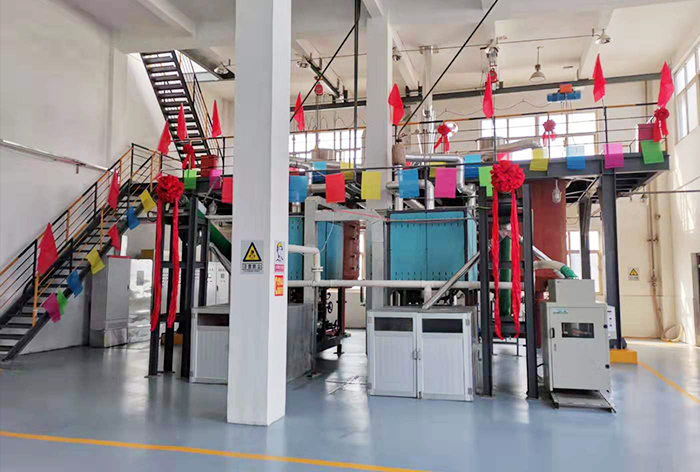
News
11月 . 12, 2024 17:06 Back to list
edta micronutrient chelate fertilizer factory
The Importance of EDTA Micronutrient Chelate Fertilizers in Agriculture
In modern agriculture, ensuring optimal plant growth and productivity is crucial for sustainable food production. Among various fertilization methods, EDTA (Ethylenediaminetetraacetic acid) micronutrient chelate fertilizers have emerged as a significant solution to address micronutrient deficiencies in soil, which can impede plant health and yield. This article explores the composition, benefits, and application of EDTA micronutrient chelate fertilizers, highlighting their role in enhancing agricultural productivity.
Understanding EDTA and Chelation
EDTA is a synthetic organic compound known for its ability to bind metal ions, forming stable complexes referred to as chelates. In the context of agriculture, EDTA chelates essential micronutrients such as iron, manganese, zinc, and copper. These nutrients play vital roles in various physiological and biochemical processes in plants, including enzyme function, photosynthesis, and chlorophyll production. However, many soils lack these essential elements due to factors like leaching, soil pH, and climatic conditions.
Benefits of EDTA Micronutrient Chelate Fertilizers
1. Improved Nutrient Availability One of the primary advantages of EDTA chelate fertilizers is their ability to improve the solubility and availability of micronutrients. The chelation process prevents nutrient precipitation in soil and enhances plant uptake. For crops cultivated in alkaline soils, where metal ions may become immobilized, EDTA enables sustained nutrient availability.
2. Targeted Nutrition EDTA chelated micronutrients can be applied directly to plants through soil or foliar applications. This targeted approach allows for precise nutrient delivery, minimizing wastage and ensuring that plants receive the right amount of nutrients at the correct growth stages.
3. Enhanced Crop Yield and Quality Research has shown that the use of EDTA chelates can result in significant improvements in crop yield and quality. For instance, crops treated with EDTA chelated iron exhibited better leaf greenness and overall vigor, leading to higher productivity and improved harvest quality. Enhanced nutrient uptake also translates to better fruit development, flavor, and nutritional quality.
4. Compatibility with Other Fertilizers EDTA micronutrient chelates can be conveniently blended with other fertilizers, making them compatible with a range of fertilization programs. This versatility allows farmers to implement comprehensive nutrient management strategies that meet the specific needs of their crops while adhering to sustainable practices.
edta micronutrient chelate fertilizer factory

Applications in Agriculture
EDTA chelate fertilizers can be applied to various crops, including leafy vegetables, fruit trees, and flowering plants. The method of application varies based on soil type, crop requirements, and existing nutrient levels. Common application techniques include
- Soil Application Mixing chelate fertilizers into the soil before planting or during the growing season can enhance soil nutrient levels directly accessible to plant roots. - Foliar Sprays Spraying EDTA chelates directly onto plant leaves allows for rapid absorption through the leaf surface, making this method particularly effective during critical growth periods or when soil uptake is compromised.
- Fertigation Incorporating EDTA chelates into irrigation systems ensures consistent nutrient delivery and maximizes nutrient efficiency, especially in large-scale agricultural operations.
Environmental Considerations
While EDTA chelate fertilizers provide several advantages, it’s important for farmers to be mindful of their environmental impact. Overuse or improper application can lead to nutrient runoff, contributing to water pollution and disrupting local ecosystems. Implementing best practices, including soil testing and adopting integrated nutrient management strategies, can help mitigate these risks while maximizing the benefits of chelate fertilizers.
Conclusion
The development of EDTA micronutrient chelate fertilizers has revolutionized agricultural practices by addressing micronutrient deficiencies and enhancing plant growth and productivity. As farmers face the challenges of feeding a growing global population amidst changing environmental conditions, the role of such advanced fertilizers will become increasingly vital. By understanding and embracing the benefits of EDTA chelates, the agricultural sector can move towards more sustainable and productive practices that ensure food security for future generations.
-
Polyaspartic Acid Salts in Agricultural Fertilizers: A Sustainable Solution
NewsJul.21,2025
-
OEM Chelating Agent Preservative Supplier & Manufacturer High-Quality Customized Solutions
NewsJul.08,2025
-
OEM Potassium Chelating Agent Manufacturer - Custom Potassium Oxalate & Citrate Solutions
NewsJul.08,2025
-
OEM Pentasodium DTPA Chelating Agent Supplier & Manufacturer High Purity & Cost-Effective Solutions
NewsJul.08,2025
-
High-Efficiency Chelated Trace Elements Fertilizer Bulk Supplier & Manufacturer Quotes
NewsJul.07,2025
-
High Quality K Formation for a Chelating Agent – Reliable Manufacturer & Supplier
NewsJul.07,2025
